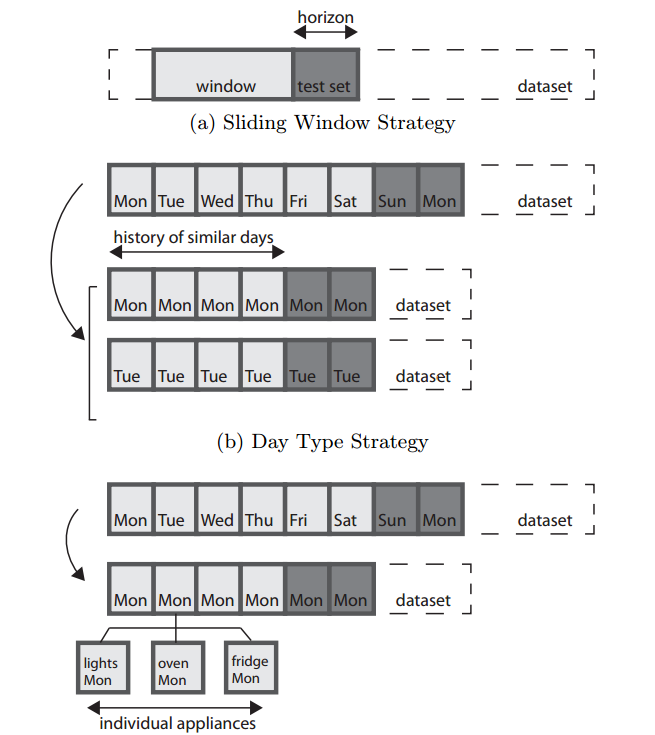The Forecasting Challenge for Power Networks of the Future
One of the great challenges for the modern world is to create an energy-efficient society that relies as far as possible on renewable power. That’s changing not only the way we use power but the way we generate it too.

In future, it’s likely that instead of a few large power stations generating all our power, we will rely on many small generators producing power as and when it is needed. But a crucial part of this mix will be the ability to forecast local power consumption in advance so that these generators can be ready to switch on when required.
And the better these forecasts, the more efficient future power networks will be. Indeed, the ability to forecast individual household consumption in the short term is one of the goals. And because of the introduction of smart meters, that looks to be an increasingly attainable goal.
That raises an important question. How do you forecast household power consumption in advance over timescales of minutes and hours? What kind of forecast techniques work best?
Today we get an insight into this question thanks to the work of Andreas Veit and pals at the Technical University of Munich in Germany. These guys have crunched data from a small number of households in Europe and the U.S. to work out what techniques provide the best forecasts.
And their results are sobering. They say the most sophisticated forecasts are no better than the most basic techniques and none produce forecasts with errors less than about 30 percent.
These guys began with data from a single home in Germany equipped with a network of sensors that monitored power consumption over eight months in 2013. The sensors measured the power consumption of appliances throughout the house, such as lights in different rooms, the fridge, washing machine, office and entertainment devices, and so on.
This data set is characterized by long periods of flat demand with peaks in the evenings. 70 percent of all the power readings in this data set lie between 25 and 30 watts.
They also use another data set gathered by researchers at MIT. This contains power consumption measurements in six U.S. households recorded over three months in 2011. This also includes readings from individual appliances such as lights, microwave, and refrigerator.
However, an important factor is that these experiments did not measure the same features in each household and so are not directly comparable. This requires some manipulation of the data to create a single data set.
Having created this data set, Veit and co used a number of different techniques to use it for forecasting. The simplest approach is to make each forecast equal to the last observation. They call this method “persistence forecasting.” But they have a number of more sophisticated algorithms as well.
They also divided up the data in different ways. One way was to look at it as a simple time series. Another option was to collate the data for each day and use these as separate data sets. That allows them to make separate forecasts for Mondays, Tuesdays, Wednesdays, and so on.
They also created a more fine-grained data set where they studied the power consumption of individual appliances on each day.
The results show significant room for improvement. First, they found that none of their more sophisticated algorithms were better than persistence forecasting. “The persistence forecasts are hard to beat in most situations,” they conclude.
What’s more, even persistence forecasting isn’t particularly good. They say that the achievable accuracy for forecasts is surprisingly low. “Our work thus motivates more research investigating how accuracy can be increased,” say Veit and co.
However, there are positive signs too. The more sophisticated algorithms benefited from larger data sets for training. So as bigger data sets become available, it should be possible to improve these forecasts. It may also be possible to adapt these algorithms to cope with the specific characteristics of individual households.
That provides some avenues for future research. There’s clearly significant work ahead for researchers creating the power networks of the future.
Ref: http://arxiv.org/abs/1404.0200 : Household Electricity Demand Forecasting - Benchmarking State-of-the-Art Methods
Keep Reading
Most Popular
Large language models can do jaw-dropping things. But nobody knows exactly why.
And that's a problem. Figuring it out is one of the biggest scientific puzzles of our time and a crucial step towards controlling more powerful future models.
The problem with plug-in hybrids? Their drivers.
Plug-in hybrids are often sold as a transition to EVs, but new data from Europe shows we’re still underestimating the emissions they produce.
How scientists traced a mysterious covid case back to six toilets
When wastewater surveillance turns into a hunt for a single infected individual, the ethics get tricky.
Google DeepMind’s new generative model makes Super Mario–like games from scratch
Genie learns how to control games by watching hours and hours of video. It could help train next-gen robots too.
Stay connected
Get the latest updates from
MIT Technology Review
Discover special offers, top stories, upcoming events, and more.